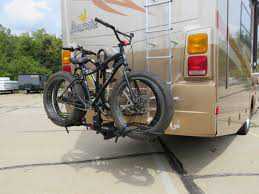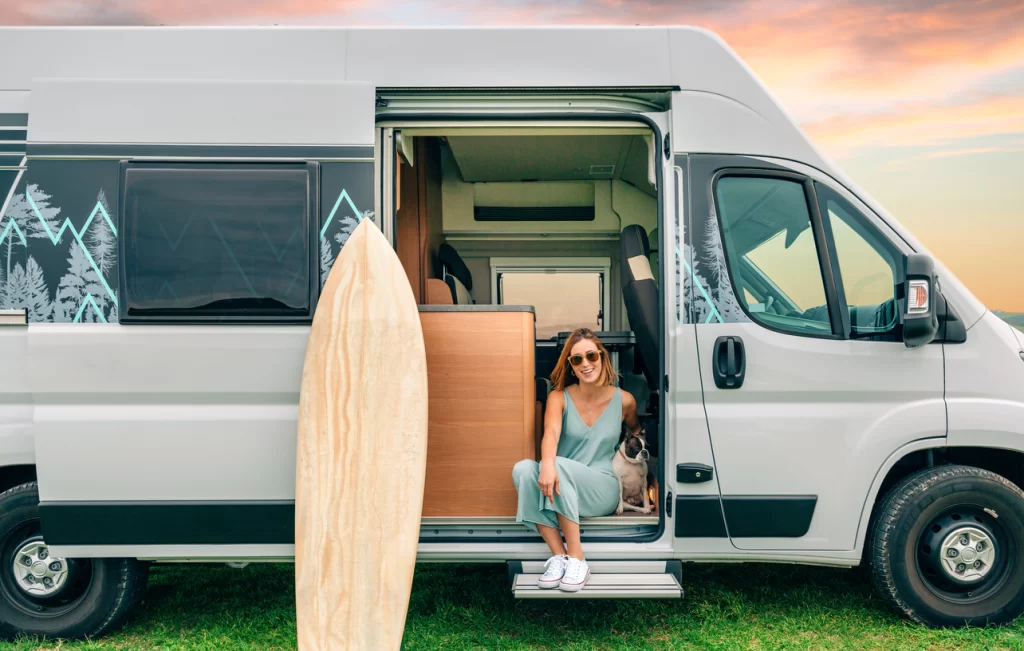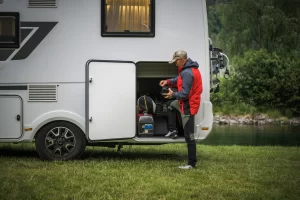
Transporting large, unwieldy items like surfboards, kayaks and other summer-themed items on your RV can be a challenge, but with the right approach, it’s completely possible––it all depends on the size of your ride.
Don’t let a lack of storage limit your options for fun on the road. Know what to expect when packing large, bulky items for your next RV trip. Here’s a step-by-step guide to safely securing your precious cargo.
Choosing the Right Mounting System
Before you even begin your road trip, the first step should be selecting a suitable mounting system––and the best option depends entirely on your RV’s roof type, the size of your larger items, and your personal preference. Here are some popular choices you can find:
Roof racks: These offer versatility and are suitable for most RV types. Just be sure that they are designed for your specific roof and can handle the weight of your larger items.
Ladder racks: Ideal for smaller RV, camper units and even trucks or vans with ladders, these types of storage units offer great versatility.
Custom mounts: If you’re handy, you can build a custom mount tailored to your RV and your items.
Mounting Your Large Summer Gear
You’re ready to go! When safely securing your large items to the exterior storage options on your RV, you’ll want to ensure that your cargo is not only protected during transit, but that it also arrives in one piece. First and foremost:
Install the mounting system: Follow the manufacturer’s instructions for installing your chosen mounting system, and be sure that you get straps that are long enough to accommodate
Pad your items: Protect your items from scratches and dings with soft padding like foam or rubber.
Secure the surfboard: Place the surfboard on the mounting system, ensuring it’s balanced. Use ratchet straps to tightly secure the board to the roof rack or ladder rack. Cross-strap the board for added stability.
Check for tightness: After driving a short distance, stop and recheck the tightness of the straps. Adjust as needed. Additional tie-downs can provide extra security, especially in windy conditions.
Additional Tips
Weight distribution: Distribute the weight evenly across the roof to prevent damage.
Weather conditions: Be aware of weather forecasts and adjust your driving accordingly. Strong winds can affect the stability of your surfboard.
Inspect regularly: Before each trip, inspect the mounting system, straps, and surfboard for any signs of wear or damage.
Storage Options for Large Items: What’s Available Per RV Type
Class A RVs
Class A RVs are designed to accommodate larger items, offering ample storage for your gear and belongings. Here are some common storage options for those bulkier items:
Exterior Storage
Basement compartments: These are the workhorses of large item storage. They’re typically located underneath the living area and offer substantial space for items like:
- Outdoor furniture
- Camping gear (tents, chairs, tables)
- Sporting equipment (bikes, kayaks, paddleboards)
- Luggage
- Generator
Pass-through storage: While primarily designed for easy access, these compartments can also handle larger items if packed efficiently.
Overhead storage: Although better suited for lighter items, some overhead compartments can accommodate larger, less frequently used items like seasonal decorations or bulky camping accessories.
Class C RVs
While Class C RVs offer more compact living spaces compared to Class A models, they still provide practical storage solutions for larger items. Here are some common storage options:
Exterior Storage
Rear Storage Compartment: Many Class C RVs have a large storage compartment at the rear, accessible from the outside. This is ideal for storing:
- Outdoor gear like camping chairs, tables, and coolers
- Sports equipment such as bikes or kayaks (depending on size)
- Luggage
Overhead Storage: Some models have overhead storage compartments, which can accommodate larger, less frequently used items.
Class B RVs
Class B RVs, or camper vans, are known for their compact size, so storing larger items can be a challenge. However, with careful planning and organization, it’s possible to maximize your storage space.
Exterior Storage
Roof Rack: A roof rack is a popular option for carrying:
- Bikes
- Kayaks
- Cargo boxes (for additional storage)
Rear Hitch: If your RV has a rear hitch, you can attach a bike rack or cargo carrie
Travel Trailers
Travel trailers offer various exterior storage options for your larger gear. Here are some common ones:
Front Storage
Pass-through storage: Some travel trailers have a pass-through storage area at the front, accessible from both inside and outside. This is ideal for storing:
- Outdoor chairs
- Small coolers
- Camping gear
Rear Storage
Exterior storage compartments: Many travel trailers have storage compartments at the rear, perfect for:
- Camping gear
- Outdoor kitchen equipment
- Sports equipment like bikes or kayaks (depending on size)
Side Storage
Pass-through storage: Similar to the front, some models have side pass-through storage for convenient access.
Exterior cargo carriers: These can be attached to the side of your travel trailer for additional storage of:
- Bikes
- Kayaks
- Cargo boxes
Roof Storage
Roof racks: While less common on travel trailers, roof racks can be installed to carry:
- Bikes
- Kayaks
- Cargo boxes
There you have it! By following these guidelines and using common sense, you can safely transport your oversized summer items and enjoy your RV adventures to the fullest. Remember, safety should always be your top priority. can safely transport your oversized summer items and enjoy your RV adventures to the fullest. Remember, safety should always be your top priority.






